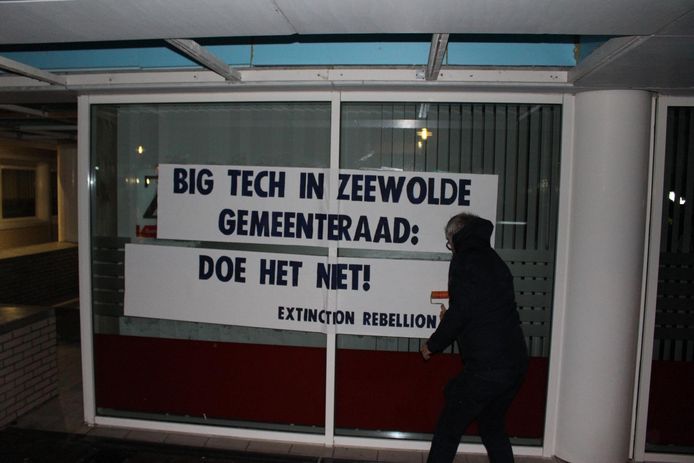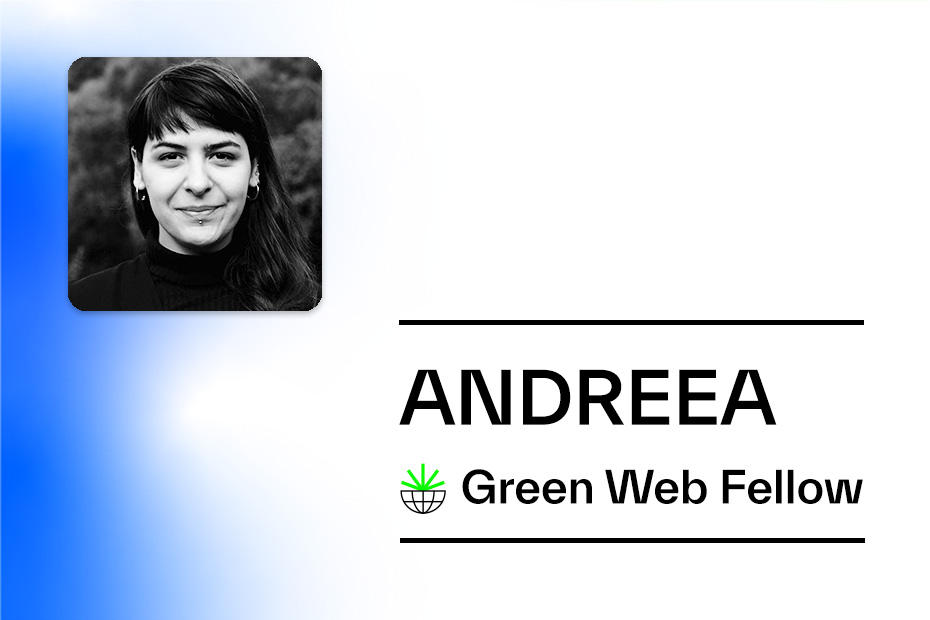The recent uproar in the Netherlands about Microsoft and Meta’s (Facebook) plans to build their data centers, that will absorb huge volumes of renewable energy, has inspired this blog post.
Data centers are increasingly becoming a frontier of the internet’s conflict over rights, governance, and land, electricity and water use. The recent conflict reminded me of Big Tech climate pledges announced in 2019 and my initial skepticism on ‘whose and which harms are these companies trying to mitigate?
In this blog post I will use data centers as a way to discuss the relationship between technology, harms and justice. I will start with outlining Big Tech’s climate pledges, after which I will use a justice lens to try and make sense of the environmental and social harms that relate to data centers.
The climate pledges
In response to increased political scrutiny on their market power, employee organizing around the lack of climate commitments, and a sense of urgency that arose from the wildfires that confronted Silicon Valley, Big Tech – Amazon, Google, Microsoft, and Apple – published their climate statements in 2019.
Through these climate pledges Big Tech expresses their commitment to become carbon neutral within the near future, recycle rare metals needed for our data infrastructures and devices, and develop more responsible water practices. Some have also created climate funds to invest in technological development that will reduce carbon emissions.
“The combined power usage of Amazon, Google, Microsoft, Facebook and Apple is more than 45 terawatt-hours a year, about as much as New Zealand”
FT times
The emphasis on energy, raw material and water consumption in itself frames the conflict of technology and the climate crisis as access to resources and waste issues. Yet, this frame ignores other climate harms that were raised by their employees, that of financially supporting donating to climate-denying lobbyists and politicians, the proliferation of climate disinformation on social media platforms, or intensifying other extractive industries such as oil and gas.
At first glance, some might say that we should encourage these initial steps of Big Tech to mitigate the climate and environmental harms that materialize from this industry. However, I enter into the debate from a digital rights background, which has left me with a natural skepticism towards the actions and promises of these companies. Where unless we address the root causes we are at best mitigating some harms and most likely greenwashing extractive practices.
So while I was reading about the move towards renewable energy to power data centers and the testing of a variety of natural cooling mechanisms – one in which Microsoft is experimenting with submerging it off the coast of Scotland – there was this gnawing feeling of what problems are these climate pledges trying to address?
“The private sector’s embrace of “green capitalism” appears to be yet another gimmick to avoid a real reckoning”
Pistor 2021
These questions become more pertinent in light of the recent report from the New Climate Institute that allows us to see these climate pledges as PR-offensive. The report highlights that the net-zero emission strategies of the 25 major global companies, which include Amazon, Apple and Google, is insufficient and heavily rely on using green energy and offsetting methods. The latter is a controversial strategy that allows companies to continue with business as usual and cancel out their emissions by investing in projects that reduce or store carbon, such as planting trees.
A justice lens
Offsetting, the controversial tactic of outsourcing responsibility for the climate impact of your core business, opens up questions about who gets to frame the problem and prioritize the solutions that are being proposed, and what are the social and environmental costs of these solutions. I will use a justice lens to explore these questions.
What do I mean by a justice lens? There are many different justice frameworks out there. Some argue for a set of principles that assign equal rights to everyone and mechanisms for how people can make a justice claim. Others argue that justice is also about representation, recognition, restoration, and transformation. I will build on Iris Marion Young, political theorist and socialist feminist, who argues that justice itself is political. There is not one ideal theory of justice, but rather there are competing theories of justice. Justice as a lens allows us to move away from a top-down analysis of social life (in this case tech climate pledges), towards and approach where we start to identify power structures and inequalities by listening to those most impacted.
Data centers as a site of struggle
Listening to those impacted allows us to see beyond the PR-offensive and often exposes different kinds of struggles. In this case, local newspapers clippings, blogs, and statements from groups who organize against the arrival and expansion of data centers show that it is about struggles over land, water and energy and the struggle over governance and decision-making power.
1. Conflict over land, water and energy
The resistance against Microsoft and Meta’s data center’s in the Netherlands primarily relate to conflict over land and energy. The Netherlands is an attractive location for data centers; it’s politically stable, a critical node in the internet’s infrastructure, there is an increasing volume of renewable energy available, and very welcoming to multinational cooperation and the technology industry.
The energy conflict, it is reported that Meta’s planned data center would gobble up twice the energy usage of Amsterdam and Microsoft’s data center will be the sole consumer of a large scale windmill park, needs to be situated within the renewable energy strategy of the country and the current energy crisis. Renewable energy is heavily subsidized through a neo-liberal structure, in which companies that get state support to build for example windmill parks can freely decide who gains access and profits from it.
The residents of the dutch polders, who are confronted with noise, light, and horizon pollution of increasing numbers of mega windmills, feel cheated as these renewable energy sites were built with the promise that it would provide green power to hundreds of thousands of households. Rather than local production for local consumption they will gain a mega data center. To make matters worse is that in times of an energy crisis, where costs for electricity and gas are skyrocketing, the industrial plants are reported to get significant discounts on their net tariffs.
This conflict over natural resources is not unique to the Netherlands. Other European countries are struggling with managing the energy consumption of these data centers. In 2021 the Irish energy regulator published new rules on connecting data centers to the energy grid. Meta’s desire to expand their data center in Los Lunes, in New Mexico, USA raised conflict over water and tax breaks. Thus, the politics of data centers are another example of a long line of privatizing gains and socializing losses.

2. governance and decision-making
As alluded to in the part on the struggle over land, water and energy, these are very much governance and decision-making issues. In these two Dutch examples residents and civic actors feel that they are either not heard or ignored in zoning plans, environmental visions and area plans. This is not surprising when we look at the different forces at play for bringing a new industry to a specific location. The window of opportunity to influence decision-making happened long before the public became aware of the plans to build the data centers.
The politics of data centers in the Netherlands needs to be contextualized. There is a trend to decentralize decision-making to municipalities, forcing local politicians to decide on issues that should be addressed nationally. Outsourcing of responsibility becomes even further contested when we look at the role of the national government in facilitating industrial development, in this case, the building of data centers.
The Netherlands Foreign Investment Agency (NFIA) of the Ministry of Economic Affairs is responsible for bringing international companies to the Netherlands. The agency facilitated Facebook by helping them find a location, introducing them to the right people at a ministerial, municipal level, and wielding political power to get priority on connecting this location to the electricity grid.
Unfortunately, these problems are not new and did not emerge with the advent of data centers. So what then is new?
There is something special about the technology industry, politicians, public officials and governments alike have bought into the idea that we want more tech and we want more influence on the technology industry. This clip of Dutch satire program Zondag met Lubach highlights the governance failures around the windmill park and Microsoft data center.
Moving forward
A justice lens can offer is a more holistic understanding of the relationship between the technology industry, the climate crisis, power, governance and injustices. It is an approach that allows us to question whose voices count in how we frame the politics of data centers.
On February 16th 2022 the central government of the Netherlands decided that they will enforce a temporary ban (of 9 months) on the building of new data centers in the country. This ban excludes the plans of Meta’s to build their mega data center in the Dutch Flevopolder. While the temporary ban might be a positive step for local residents who are fighting the arrival of data centers in their backyard, the central government did not address any of the fundamentally flawed governance issues highlighted in this blog post.
Credits
Images were taken from regional newspaper De Stentor



